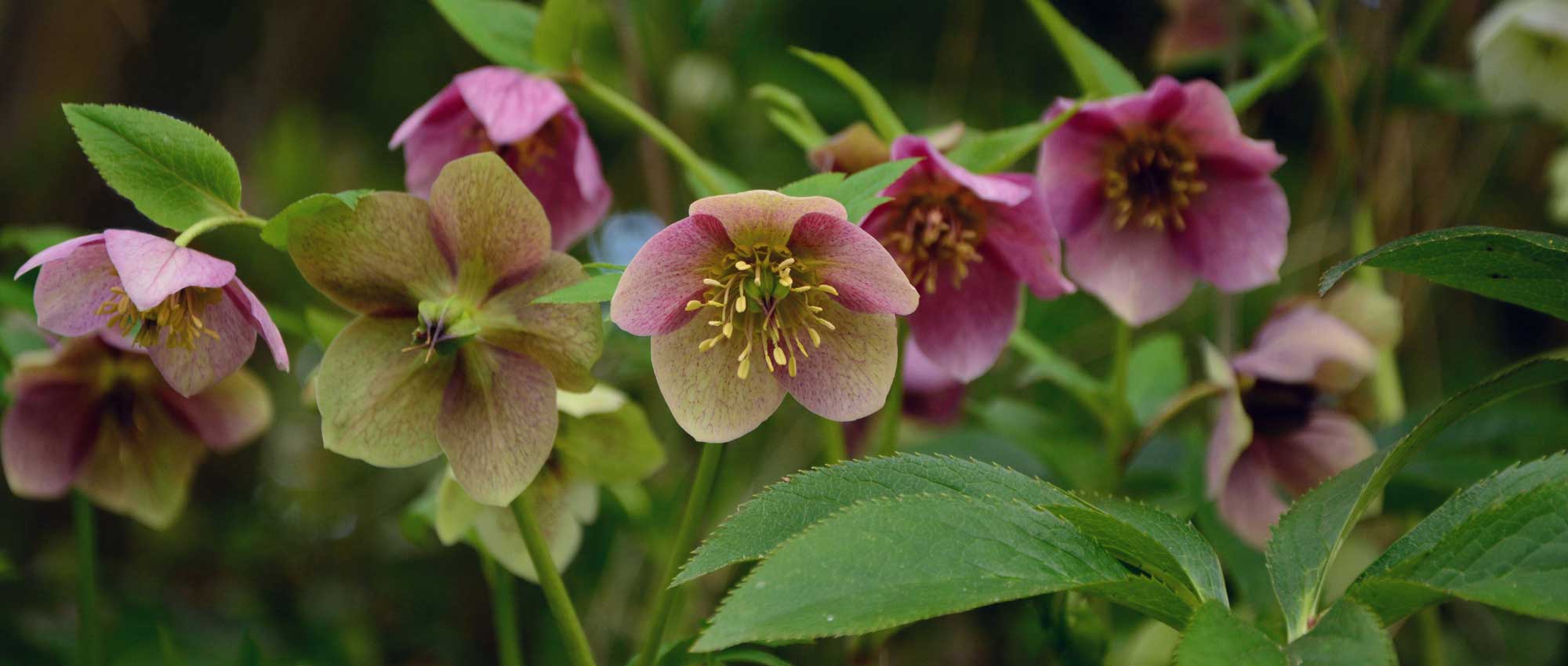
Hellebores: 7 successful pairing ideas
for a flowering garden in the middle of winter!
Contents
With their delicate flowering that blooms in the heart of winter, hellebore makes this season a little sweeter and more colourful! They are appreciated for their stunning flowers with a fragile appearance, which appear when other plants are dormant. There are many varieties, which can come in a wide range of colours. Discover our ideas and inspirations for pairing them in the garden!
With spring bulbs
Plant late-flowering hellebores (such as Helleborus orientalis) with spring bulbs: snowdrops, daffodils, tulips, or muscari, for a flowering garden by late February – early March!
For a stunning spring scene, feel free to combine red or purple flowering hellebores (for example, Helleborus orientalis ‘Rouge’) with the pure white flowering of Thalia Daffodils (Narcissus triandrus ‘Thalia’). The white flowers of the daffodils will beautifully highlight the red hue of the hellebore… for a very contrasting effect!
You can also plant some hybrid hellebores, accompanied by spring snowflake (Leucojum vernum) with its delicate white bells, winter aconite (Eranthis hyemalis) and its bright yellow flowering, and some crocus (Crocus tommasinianus). If you choose pink-purple flowering hellebores, they will harmonise beautifully with the crocus flowers to create a very harmonious and delicate ensemble, enhanced by the bright flowering of the Eranthis.
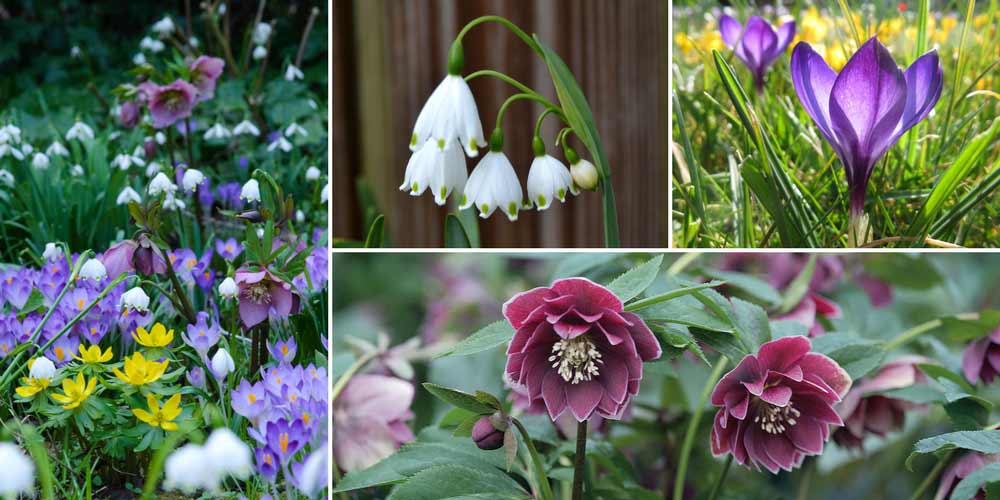
Crocus tommasinianus, Eranthis hyemalis, Leucojum vernum and Helleborus x hybridus (Credit Photo GAP Howard Rice) – Leucojum vernum (photo Tony Alter) – Crocus tommasinianus ‘Ruby Giant’ – Helleborus orientalis ‘Double Aubergine’
Read also
Hellebores: planting, growingTo enhance a rockery
If you wish to integrate them into a rockery, choose Corsican Hellebores or stinking Hellebores, as they are naturally suited to dry, stony soils. They are better suited than other species to sunny exposures, but they also thrive in partial shade. Plant alongside them some clumps of grasses (Carex or Stipa), and if your rockery is shaded, add ferns: for example, Dryopteris erythrosora with its beautiful coppery fronds, or Cyrtomium falcatum.

Cyrtomium falcatum (photo Denis Prevot), Carex comans ‘Milk Chocolate’ and Helleborus argutifolius (photo Tigerente)
Discover other Helleborus - Hellebore
View all →Available in 0 sizes
Available in 0 sizes
Available in 1 sizes
Available in 2 sizes
Available in 2 sizes
Available in 2 sizes
Available in 0 sizes
Available in 1 sizes
Available in 1 sizes
Available in 1 sizes
With other winter flowerings
Place winter-flowering bushes at the back of the border, such as Viburnum x bodnantense ‘Dawn’ with pink flowers, or Daphne odora with pleasantly fragrant blooms. They will structure the border and add height. Plant a few Hellebores alongside them, in small groups of three or five young plants. At the base, place some small perennials, such as primroses or Viola cornuta with blue-purple-yellow flowers.
You can create a beautiful scene by combining Witch Hazel, which flowers from January in warm tones, with Oriental Hellebores, and a few small perennials or bulbous plants, such as Winter Aconite or Snowdrop! Thus, the yellow blooms of Witch Hazel and Winter Aconite complement each other, bringing much cheer and warmth. The purple flowering of the Hellebore contrasts with the small white flowers of the snowdrop.
Find more winter-flowering perennials here!
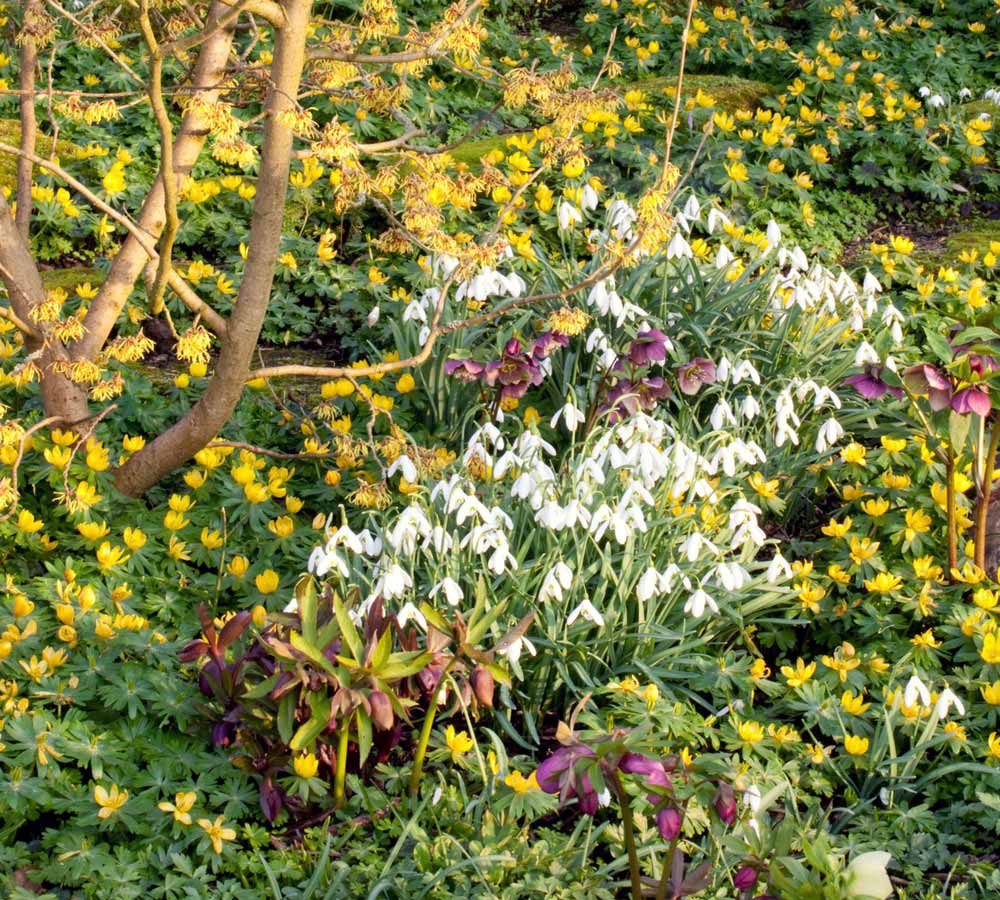
Eranthis hyemalis, Galanthus ‘Magnet’, Helleborus orientalis and Hamamelis ‘Arnold Promise’ (Credit Photo GAP – Elke Borkowski)
Read also
5 remarkable Christmas rosesWith decorative wood bushes
To bring colour and structure to your borders, consider decorative wood bushes. With hellebore flowers, they will create a new winter appeal in the garden. We appreciate dogwoods for their vibrant colours and warm tones! Thus, opt for the bright red wood of Cornus alba or the orange of Cornus sanguinea. You can also choose willows with yellow or orange branches. And for a touch of originality, enjoy the twisted willows and hazels.
Also consider Prunus, which are known for their striated and shiny bark, often taking on red-orange hues: opt for Prunus serrula or Prunus maackii.
Acer griseum is also a remarkable tree with its cinnamon-coloured bark that peels off in strips.

Cornus alba ‘Baton Rouge’, Helleborus orientalis ‘Peach’ and Prunus serrula (photo Esther Westerveld)
With decorative foliage
To accompany your hellebores, choose plants with evergreen and decorative foliage. Pair with Helleborus x nigercors ‘Magic Leaves’ featuring green leaves marbled with cream white, some clumps of ferns, interesting for their very graphic fronds: Cyrtomium fortunei var. clivicola or Dryopteris erythrosora. Also consider heucheras and their colourful foliage! Enjoy varieties with orange-red leaves to bring vitality to your garden (for example, Heuchera ‘Rio’)! As for grasses, they will add a light and natural aspect: feel free to scatter a few clumps of Carex in your bed. Plant ivies, either as ground cover or to serve as a backdrop by climbing them on a wall or tree trunk. Choose variegated varieties, as they will bring more brightness.
You can also create an elegant scene with soft and warm tones by pairing the stunning Helleborus balliardae ‘Maestro’ with the graphic foliage of purple chervil Anthriscus ‘Ravenswing’!
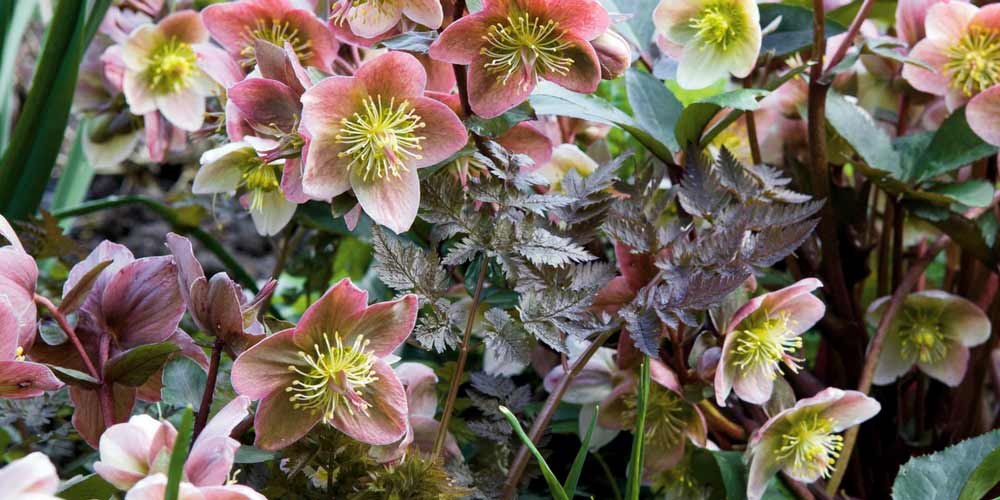
Helleborus ballardiae ‘Maestro’ and Anthriscus ‘Ravenswing’ (Copyright GAP Photos – Jonathan Buckley – Design Alan Titchmarsh)
To create a pot arrangement
Hellebore can also be grown in pots! Ensure you have a sufficiently large container and drain the bottom with gravel. Create a stunning floral arrangement by planting an Oriental Hellebore alongside some primroses, violas, and cyclamen. The Hellebore will form a lovely clump that adds volume, while the primroses and violas will bring small touches of bright colours. Also consider daffodils, particularly the ‘Tête à Tête’ variety, which is perfectly suited for pot cultivation!
→ Learn more about growing Hellebore in pots in Gwenaëlle’s advice sheet.
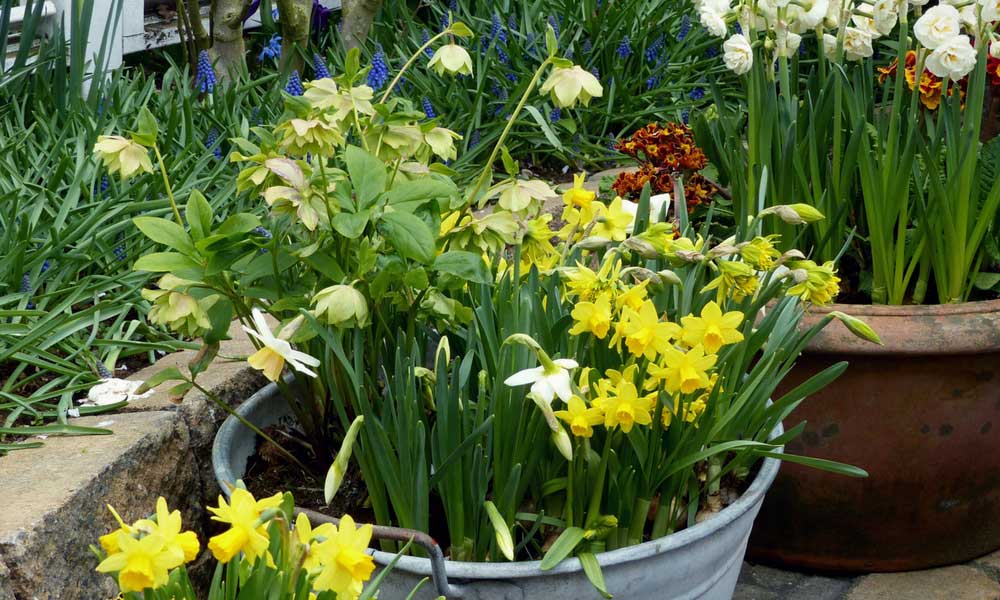
Hellebores and Daffodils ‘Tête à Tête’ in pot
To forget winter, with flowering in warm tones!
To break away from the cold and dreary colours of winter, take the opposite approach and choose plants with cheerful and vibrant tones! Opt for bright flowerings in shades of yellow, orange, or red. Thus, plant Hamamelis, Forsythias, and decorative wood Cornus at the back of the border. Place some Helleborus orientalis ‘Red Lady’ or Helleborus orientalis Guttatus Yellow in front of them. Add some Winter Aconites at their feet to cover the soil with their yellow flowering. And scatter a few clumps of grasses: Carex or Stipa.

Forsythia koreana ‘Kumsun’, Helleborus orientalis, and Hamamelis x intermedia ‘Ruby Glow’
- Subscribe!
- Contents
































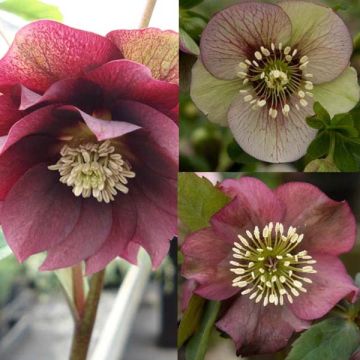
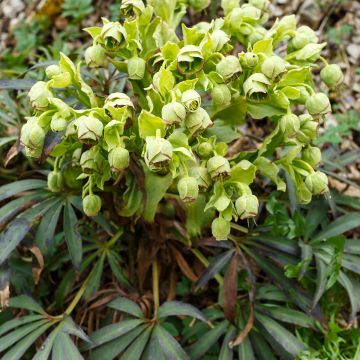
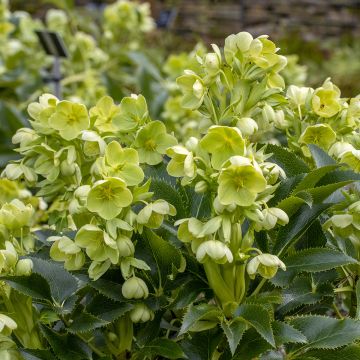
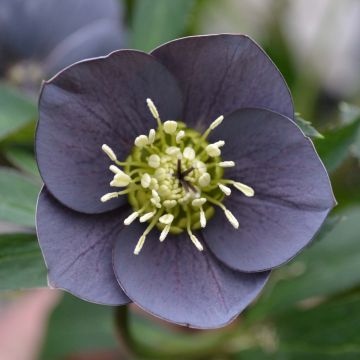
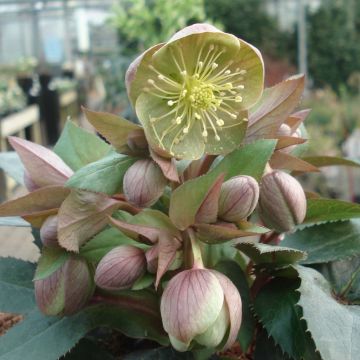
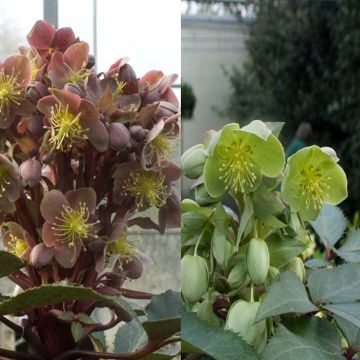

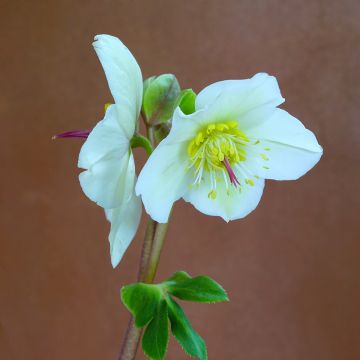
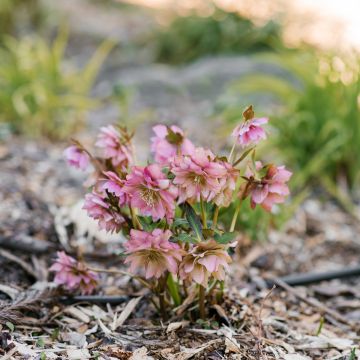
Comments